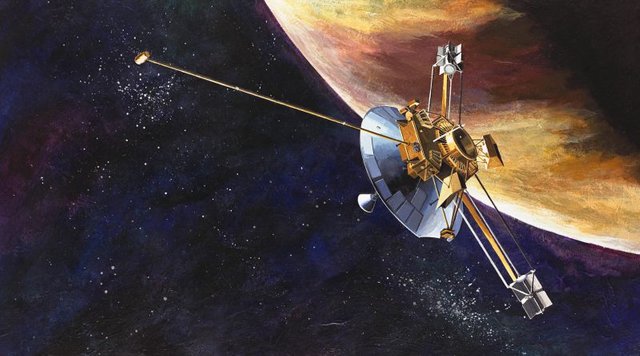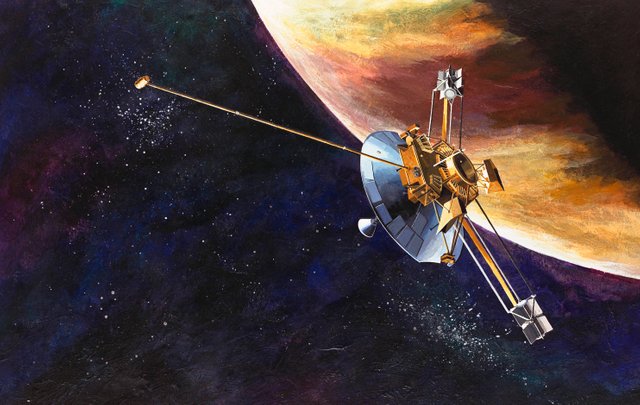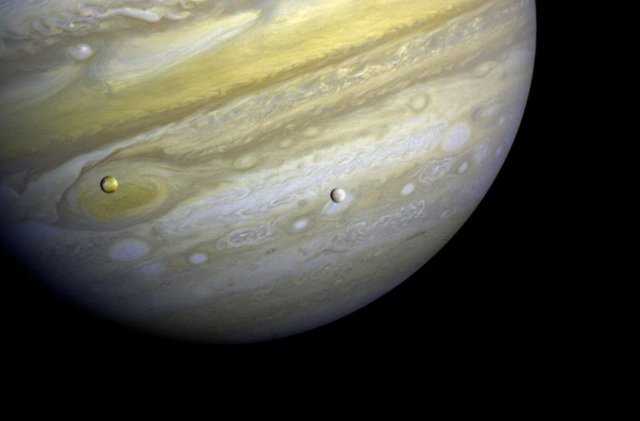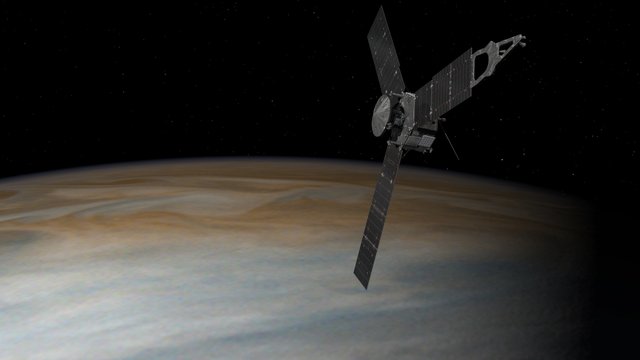Decade Jupiter Research

Launched in 2011, the spacecraft "Juno" hit Jupiter orbit only 4 July 2016, thereby including themselves in the long history of the study of the gas giant. For a long time one of the brightest objects in the sky, the planet Jupiter, was interested in people. And today, the astronomers are sure that further study Yupitera- is the key to understanding the formation and further development of our Solar System. They suggest that the gas giant is not always in the same place and travel to outer space. In particular, in the early stages of evolution of Jupiter, most likely it passed through the solar system, impairing the development of Mars and appreciably affect the location of the asteroid belt. Scientists in the 1970s began to organize missions to study Jupiter. Pioneer 10 and Pioneer 11 were launched and reached the planet in 1973 and in 1974 respectively. For the first time a clear picture of Jupiter's satellites have been received and the Great Red Spot.
Scientists have also discovered many other details: the planet is composed mainly of liquid, it has a divergent magnetic field. Flight Pioneer 10 and 11 paved the way for further research, dedicated to Jupiter. In the late 1970's, namely in 1977, it was launched Voyager 1 and 2. Voyager 1 went even beyond the solar system, to outer space. Later, Voyager 2 and Pioneer also extend beyond the solar system. Couple Voyager in 1979 passed Jupiter, making more than 52 000 photos and the planet and its satellites in just a couple of months.
he information obtained has helped to open many new facts: the existence of lightning on top of the clouds and the presence of hurricane systems. Finally, the first active volcano on the moon Io has been found outside the Earth. Period 1980's was marked by the mission "Galileo". In contrast to previous flight, space equipment, Galileo was to enter orbit the planet for a long observation, rather than a short collection of information passing. For the first time data on the Jovian atmosphere were obtained: space probe descent deep into Jupiter was at 153 kilometers, and then exposed to extreme heat melts and solutions. In 1992, the Ulysses spacecraft to study the sun has collected a certain amount of information about Jupiter. More Cassini spacecraft in 2000 on its way to Saturn made about 26,000 images of the planet. For detailed portrait of Jupiter was formed. Hubble Jupiter Research held to this day. In October of 2015 pictures taken by Hubble showed changes in the Great Red Spot, and in July 2016 were taken pictures of the Northern Lights at the poles of the planet.
And thanks to a successful exit Juno to Jupiter's orbit, scientists will be able to publish new information in September.
Source: http://nasa.ru/